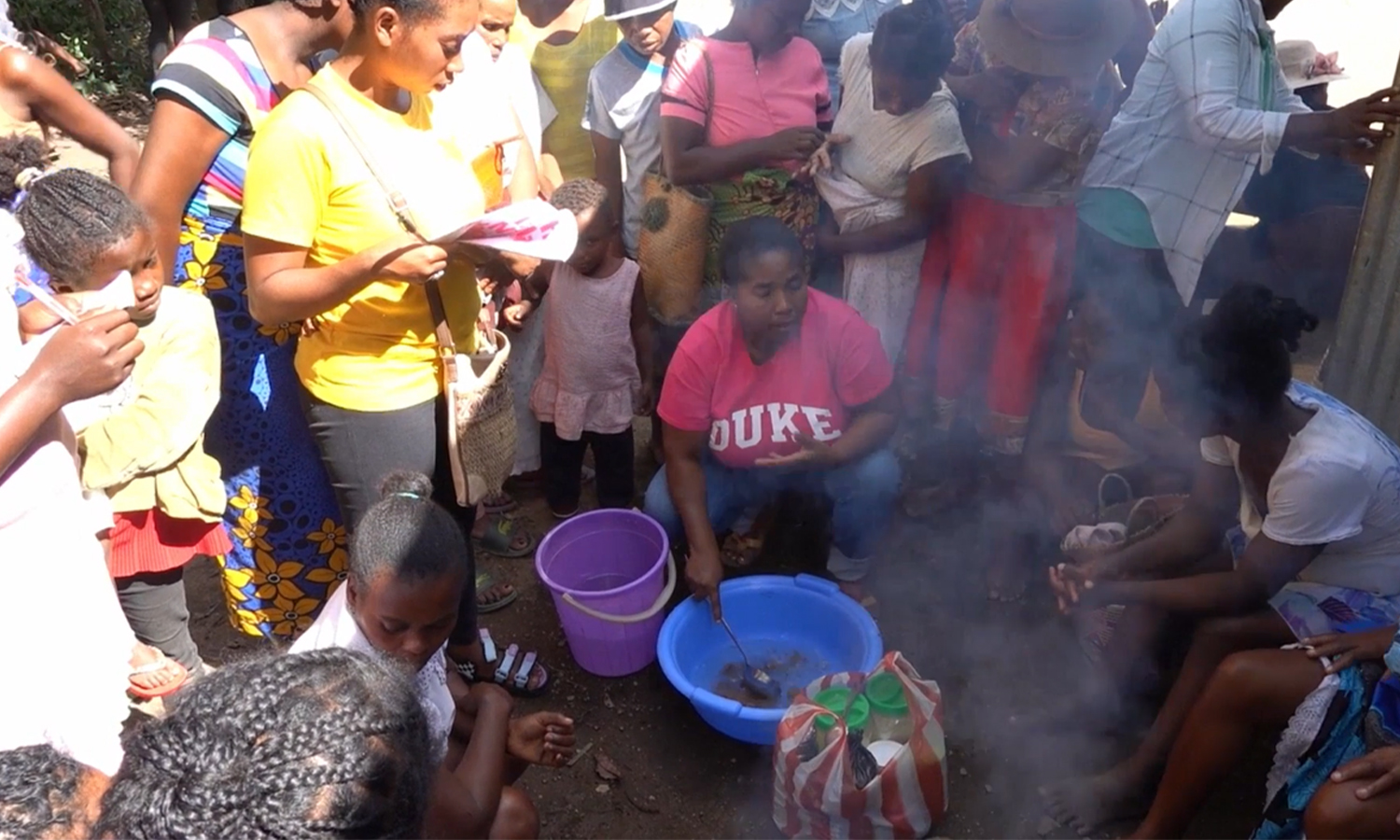Written by Nestorine, Ph.D. student at the University of Mahajanga. Originally published in LEMURS Magazine: The “Where” Issue in February 2025.
I was born in the Farahalana countryside in the district of Sambava, in the SAVA region of northeastern Madagascar. I am working on my Ph.D. at the Doctoral School of Life Engineering and Modeling (EDGVM) at the University of Mahajanga. My research concerns food security and nutritional health of children and mothers living in the SAVA. More precisely, we are exploring the relationships between eating habits, dietary diversity, and nutritional status at the level of rural households.
Her partnership with DLC-SAVA
My first meeting with DLC-SAVA Conservation was in 2018, when their teams provided training on environmental protection to students at the Centre Universitaire Régional de la SAVA (CURSA). In 2021, we began a collaboration as part of the implementation of the project “Sustainability and Community Health: Improving nutrition, agriculture, and hygiene in the SAVA region of Madagascar.” Working with DLC-SAVA increases my motivation to continue my research in the field of nutrition, broadens my knowledge, and develops my ability to work in a team.
Why Madagascar has the fourth highest rate of malnutrition in the world (World Bank, 2018)
In Madagascar, the level of malnutrition is high because of various factors such as the lack of diversity of agricultural production in certain regions due to drought, the lack of arable land, the lack of knowledge of mothers in terms of healthy and balanced diet, and especially the crucial lack of food purchasing power of the majority of the population. Stunted growth, anemia, below-average weight, vulnerability to diseases, and low cognitive capacity of young children are all effects of malnutrition.
In addition, the Malagasy diet is not very diversified and typically monotonous. It mostly consists of just rice and green leafy vegetables, often kale, in the majority of households. It lacks diversification because people do not eat enough other food groups, such as meat, dairy products, legumes, and especially fruits and a wider variety of vegetables rich in micronutrients essential for the proper functioning of the body.
Ways to combat malnutrition
Environmental protection, reforestation to avoid drought, diversification of agricultural products, livestock breeding, nutritional education, and job creation to increase household purchasing power all contribute towards fighting malnutrition in a sustainable manner.
In the short term, we can use food supplements for young children and women of reproductive age and organize school canteens serving nutritious foods for young children of preschool age.
Currently we are making moringa powder as a source of protein and micronutrients to mix with weaning foods based on cereal flour and/or tubers. I am exploring moringa’s effectiveness as a potential food supplement to combat malnutrition, and I hope to make this powder locally available once our products are proven effective and put on the market.

Nestorine teaching mothers how to make a nutrient-dense baby porridge from locally available foods like sesame seed butter, corn flour, and moringa flour.


